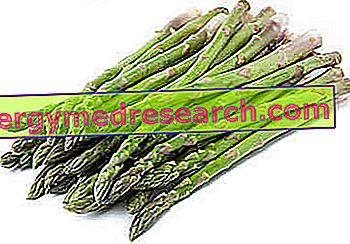What's this
What is relish?
The relish is a condiment typically based on vegetables, fruits and / or chopped herbs, cooked and fermented in brine; it is used, in its many variants, above all to emphasize the taste characteristics of certain foods.

The relish probably derive from the need to preserve the vegetables in the winter season, and it is reasonable to think that they originated in the Indian continent. Some popular examples of relish are the chutney sauces and the North American relish - a sort of "jam" of pickled gherkins to be consumed mainly with hot dogs or hamburgers.
Did you know that ...
The word "chutney" - the English name of dry or liquid bases for sauces typical of Indian cuisine - originates from the Indian language.
In North America, the word "relish" is often used to describe the finest chopped pickled cucumbers - pikle - dill, or other variants with a sweet taste - even spicy. Relish are fairly popular condiments, especially in the United States, and the "sorrel" taste they give is a very important element for many American interpretations of tartar sauce.
The relish is not framed in the VII fundamental food groups. Although it is a condiment, it should be considered as a real recipe, in particular as a sauce. It should however be noted that, in its most widespread version, the main ingredient of the relish is made from pickled gherkins. This denotes a low caloric intake and a good application even in the most restrictive diets against obesity. The fiber intake is discreet, while the vitamin and mineral profile are not excellent. Its relevance in clinical nutrition therapies varies by case. We will better understand its nutritional characteristics and dietary relevance in the two paragraphs that follow.
Did you know that ...
The relish probably derive from the need to preserve the vegetables in the winter season, and may have originated in India.
Nutritional Properties
Relish nutritional properties
We begin by specifying that there are many varieties of relish, it is therefore impossible to carry out a specific nutritional translation valid for all. We will then examine the most widespread, or relish based on pickled gherkins.
The relish does not belong to any of the VII fundamental food groups. Cucumbers have a low vitamin C content, which would make them relevant to the VII group; on the other hand, those used for relish are fermented and processed, an aspect that inexorably compromises this nutritional property. Note : relish containing spices and aromatic herbs could boast much superior vitamin and mineral levels.
The relish has a generally moderate caloric intake, which can increase a lot in relation to the addition of oil. Energy is supplied mainly by carbohydrates or lipids, followed by less important amounts of protein. Carbohydrates consist almost entirely of fructose - simple, soluble, monosaccharide sugar - but sucrose can be added to sweet relish - possibly also contained in honey and maple syrup. Fatty acids are mainly unsaturated, but the specific chemical nature depends on the composition of any oil used in the recipe. Peptides have a low biological value, ie they do not contain - in the right quantities and proportions - the essential amino acids of the human protein model.
The gherkin relish contains dietary fiber; instead it is cholesterol free and, as a rule, does not contain lactose or gluten. It is naturally low in amino acid phenylalanine and purines. However, it should be remembered that it can show relevant levels of histamine.
As for the vitamins, the pickled cucumber relish boasts low concentrations of vitamin C (ascorbic acid) and traces of B vitamins. Retinol and especially its equivalents can abound in relish enriched with paprika. Sodium and potassium are the prevailing minerals and also the most relevant ones.
Diet
Relish in the diet
The relevance of the relish in the diet is, for the most part, of marginal importance; this is because the middle portion, as we shall see, is generally quite reduced. Exceptions are cases of hypersensitivity, for example to histamine for those based on fermented cucumbers, or specific allergy to the ingredients.
Pickled gherkin relish lends itself to most diets. If poor in fats, added sugars and therefore calories, it has no contraindications for overweight and metabolic pathologies diabetes mellitus type 2 and hypertriglyceridemia.
Dietary fibers perform many useful functions for the body, including:
- increased satiety
- modulation of nutritional absorption - reducing the insulin glycemic surge and hindering the absorption-reabsorption of cholesterol and bile salts
- prevention or treatment of constipation / constipation.
This latter aspect also contributes to reducing the chances of carcinogenesis of the large intestine and of many other discomforts such as hemorrhoids, anal fissures and anal prolapse, diverticulosis and diverticulitis, etc. It should also be remembered that soluble fibers constitute a nutritional substrate for intestinal bacterial flora; maintaining the trophism of the microbiota, whose metabolism releases important nutritional factors for the mucosa, further promotes the health of the colon.
deepening
Consuming a homemade relish based on "real" raw pickled gherkins, some claim that we can enjoy a small probiotic function. These foods are in fact produced by fermentation of the same bacteria used in yogurt. On the other hand, within very abundant meals, it is unlikely to think that the microbiota contained in the relish can survive digestion.
Vitamin C levels are likely to be insufficient to establish a certain antioxidant action. Sodium content - provided the sauce replaces table salt - not being particularly high, it does not excessively affect the diet against primary sodium sensitive hypertension.
Contraindications of cucumber relish for celiac disease and lactose intolerance are not identified; instead it would be advisable to avoid histamine intolerance. It is allowed in phenylketonuria and even severe hypertrichemia - gout.
Relish without ingredients of animal origin has no limitation in the vegetarian and vegan diet; the same applies to philosophies and / or religions of all kinds.
The average portion of relish is 10-20 g.
Kitchen
How to use relish in the kitchen
The relish generally consists of pieces of vegetables or fruit immersed in a sauce, although the latter ingredient could be considered optional. There are also formulas that include aromatic herbs - such as dill - and other aromas, as in the case of "chermoula" - entirely prepared with herbs and spices.
Chermoula recipe
Chermoula or charmoula is a relish typical of Algerian, Libyan, Moroccan and Tunisian cuisine. It is traditionally used to flavor fish, shellfish and seafood - molluscs - but it can also accompany meat and vegetables. The most common ingredients are: garlic, cumin, coriander, extra virgin olive oil, lemon juice and salt. Certain regional variations may also include: pickled lemon, onion, ground pepper, black pepper, saffron and other aromatic herbs. In Sfax, Tunisia, during Eid al-Fitr it is traditional to prepare seasoned salted fish with chermoula. This regional variety has the appearance of a puree composed of a dusty and dark mix - cloves, cumin, red pepper, black pepper and cinnamon - mixed with onions cooked in olive oil. Another Moroccan version contains dried parsley, cumin, paprika, salt and pepper.
The main taste of relish can be characterized by a single type of vegetable or fruit, or a combination of coarsely or finely chopped ingredients. The consistency can therefore vary from one relish to another, but to the touch it is generally rather smooth, like sauce - like ketchup, so to speak. On the palate, the relish can be acidic, sweet, salty and spicy - sometimes all four characteristics are present, with the prevalence of one or the other depending on the purpose. Generally it has a strong flavor, which enhances or enriches the primary recipe to be seasoned.
American Relish
In the United States, the most common relish are based on pickled cucumbers and are also called "pikle relishes". The organoleptic characteristics of the pickles - the right compromise between acid, sweet and slightly salty - are much appreciated in America, where they become part of many recipes.
The American relish is used mainly in burgers - pickles in ketchup sauce - and in hot dogs - pickles in mustard sauce. Another type of relish widely marketed in the USA is the corn-flavored relish. The major American relish producers are Heinz, Vlasic and Claussen. A special kind of relish with a sweet taste is used in the Chicago hot dog.
Other types of relish
The following preparations can be considered types of relish:
Ajika, Ajvar, Achar, Atchara, Bostongurka, Biber salçası, Branston relish, Chakalaka, Chermoula, Chow-chow, Chrain, Chutney, Cranberry relish, Ćwikła - of Polish beet - Dill relish, Doenjang, Gentleman's Relish - was invented in 1828 by John Osborn and contains spicy anchovies; traditionally smeared with unsalted butter on toast - Gochujang, India relish, Lecsó, Ljutenica, Kachumbari - common in East Africa - Kimchi relish - prepared using kimchi as the main ingredient - Kyopolou, Kuchela, Mango pickle, Mixed pickles, Mostarda, Muhammara, Matbucha, Pear relish, Piccalilli, Pickled cucumber, Pinđur, Salsa - habanero, chipotle and chimichurri - Zacuscă



